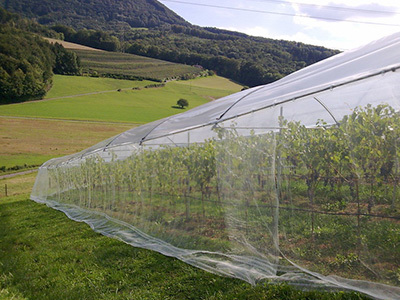Enhancing Crop Protection with Cover Nets: A Comprehensive Guide
Cover nets are becoming increasingly vital in the realm of protected agriculture, particularly in pest management. As farmers face growing challenges from pests and adverse weather conditions, the use of cover nets has emerged as an effective strategy to safeguard crops. These nets are designed to create a physical barrier that can significantly reduce pest intrusion without the need for chemical insecticides, thereby fostering a healthier growing environment.
One of the primary benefits of using cover nets is their ability to provide physical protection against various pests. Insects such as aphids, whiteflies, and caterpillars can cause substantial damage to crops. By utilizing cover nets, farmers can effectively block these pests from accessing their plants, reducing the risk of infestations and the subsequent need for chemical interventions. This not only promotes organic farming practices but also ensures that the produce remains safe for consumers.
Additionally, cover nets can help in regulating microclimatic conditions within the growing environment. By controlling temperature and humidity levels, these nets can create favorable conditions that boost plant growth. For instance, cover nets can protect against extreme temperatures and sudden weather changes, which can be detrimental to sensitive crops. This protective layer helps maintain consistent growing conditions, ultimately leading to improved crop health and higher yields.
Moreover, cover nets offer protection against environmental factors such as hail, wind, and excessive sunlight. In regions prone to extreme weather conditions, using cover nets can minimize physical damage to plants, ensuring that they maintain their structural integrity. This is particularly essential for delicate crops that are more susceptible to environmental stressors.
When selecting cover nets, it is important for farmers to consider key factors such as mesh size, material durability, and UV resistance. The mesh size should be chosen based on the specific pest threats in the region. Smaller mesh sizes can effectively block even the tiniest insects, while larger openings may be suitable for crops that are less susceptible to pest damage. Additionally, durable materials that withstand UV exposure will ensure that the nets last throughout the growing season.
In conclusion, cover nets are a pivotal tool in modern agriculture, particularly in protected cultivation. By offering an effective barrier against pests, regulating microclimatic conditions, and protecting against environmental stressors, cover nets can significantly enhance crop productivity and sustainability. As the agricultural sector continues to evolve, integrating cover nets into farming practices will undoubtedly benefit growers seeking to improve their yields and maintain high-quality produce.
One of the primary benefits of using cover nets is their ability to provide physical protection against various pests. Insects such as aphids, whiteflies, and caterpillars can cause substantial damage to crops. By utilizing cover nets, farmers can effectively block these pests from accessing their plants, reducing the risk of infestations and the subsequent need for chemical interventions. This not only promotes organic farming practices but also ensures that the produce remains safe for consumers.
Additionally, cover nets can help in regulating microclimatic conditions within the growing environment. By controlling temperature and humidity levels, these nets can create favorable conditions that boost plant growth. For instance, cover nets can protect against extreme temperatures and sudden weather changes, which can be detrimental to sensitive crops. This protective layer helps maintain consistent growing conditions, ultimately leading to improved crop health and higher yields.
Moreover, cover nets offer protection against environmental factors such as hail, wind, and excessive sunlight. In regions prone to extreme weather conditions, using cover nets can minimize physical damage to plants, ensuring that they maintain their structural integrity. This is particularly essential for delicate crops that are more susceptible to environmental stressors.
When selecting cover nets, it is important for farmers to consider key factors such as mesh size, material durability, and UV resistance. The mesh size should be chosen based on the specific pest threats in the region. Smaller mesh sizes can effectively block even the tiniest insects, while larger openings may be suitable for crops that are less susceptible to pest damage. Additionally, durable materials that withstand UV exposure will ensure that the nets last throughout the growing season.
In conclusion, cover nets are a pivotal tool in modern agriculture, particularly in protected cultivation. By offering an effective barrier against pests, regulating microclimatic conditions, and protecting against environmental stressors, cover nets can significantly enhance crop productivity and sustainability. As the agricultural sector continues to evolve, integrating cover nets into farming practices will undoubtedly benefit growers seeking to improve their yields and maintain high-quality produce.
Key words:
Related News
11-01
10-31
CONTACT US
Email: sales8@meyabond.com
Tel: +8618911966213
No.3 Yard, ZhongHe Road, 100071,FengTai District, Beijing, China
Email: sales8@meyabond.com
Tel: +8618911966213
No.3 Yard, ZhongHe Road, 100071,FengTai District, Beijing, China
















